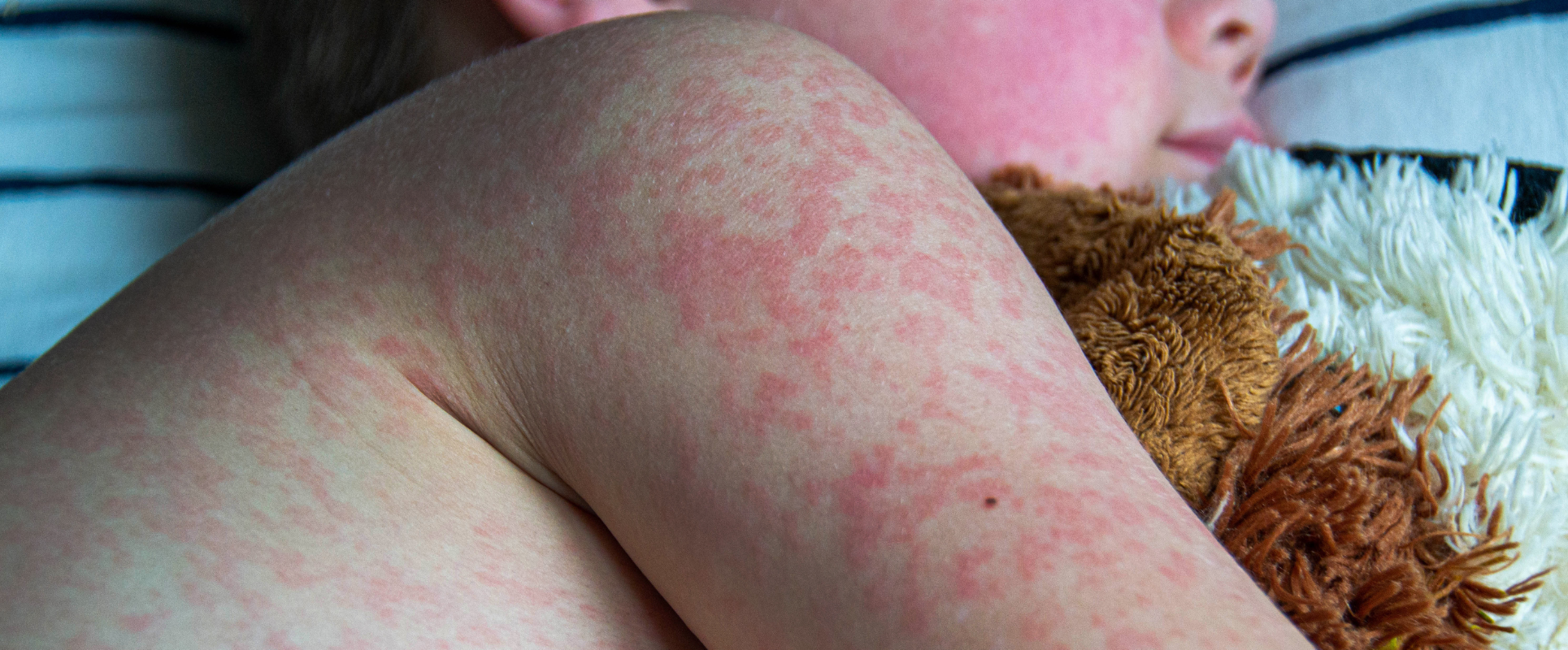
Measles in Children: Causes, Symptoms, Treatment and Prevention
Measles is a highly contagious viral disease that primarily affects children. Despite the availability of effective vaccines, outbreaks still occur, especially in communities with low vaccination coverage.
This comprehensive guide will help parents understand the causes, symptoms, complications, treatment and prevention of measles in children.
What Is Measles?
Measles is caused by the measles virus, a paramyxovirus of the genus Morbillivirus. It spreads through respiratory droplets when an infected person coughs or sneezes.
According to the Centers for Disease Control and Prevention (CDC), measles can remain infectious in the air and on surfaces for up to two hours.
How Measles Spreads
Children can get measles when they:
-
Inhale virus-containing droplets
-
Touch contaminated surfaces and then touch their mouth, nose or eyes
-
Are in close contact with an infected person
Measles is so contagious that 9 out of 10 non-immune individuals in contact with an infected person will get the disease.
Symptoms of Measles in Children
Measles typically progresses in stages over 2–3 weeks:
1. Incubation Period
-
7–14 days after exposure
-
No symptoms
2. Early Symptoms (Prodrome)
-
High fever (often > 104°F / 40°C)
-
Cough
-
Runny nose
-
Red, watery eyes (conjunctivitis)
-
Loss of appetite
-
Fatigue
3. Koplik Spots
-
Tiny white spots with bluish-white centers inside the mouth, appearing 2–3 days after initial symptoms
4. Measles Rash
-
Appears 3–5 days after early symptoms
-
Starts at the hairline and spreads downward to the face, trunk and limbs
-
Rash consists of red, flat spots that may merge together
-
Accompanied by high fever
Complications of Measles
Measles can lead to serious complications, especially in children under 5 years and those with weakened immune systems. According to the WHO:
-
Diarrhea (8% of cases)
-
Ear infections (7–9% of cases)
-
Pneumonia (6% of cases, leading cause of death from measles)
-
Encephalitis (1 in 1,000 cases)
-
Blindness due to corneal ulceration
Malnourished children, particularly those with vitamin A deficiency, are at higher risk of severe measles.
How Measles Is Diagnosed
Doctors typically diagnose measles based on:
-
Clinical presentation (fever, rash, cough, runny nose, conjunctivitis)
-
Confirmation with laboratory tests:
-
Measles-specific IgM antibodies in serum
-
PCR testing of throat swabs or urine samples
Treatment of Measles in Children
There is no specific antiviral treatment for measles. Supportive care helps manage symptoms and prevent complications:
-
Adequate hydration
-
Nutritional support
-
Fever management with paracetamol or ibuprofen
-
Monitoring for complications such as pneumonia
Vitamin A supplementation is recommended by WHO to reduce the risk of severe complications:
-
50,000 IU for infants <6 months
-
100,000 IU for infants 6–11 months
-
200,000 IU for children ≥12 months
-
Given immediately on diagnosis and repeated the next day
Prevention of Measles
1. Vaccination
The MMR vaccine (Measles, Mumps, Rubella) is the most effective prevention method:
-
First dose at 12–15 months
-
Second dose at 4–6 years
According to CDC, two doses of MMR vaccine are about 97% effective in preventing measles.
2. Isolation
Children with measles should be kept at home and isolated from others for at least four days after the rash appears.
3. Herd Immunity
High vaccination coverage protects the community, especially infants under 12 months who are too young to be vaccinated.
When to Seek Medical Help
Seek immediate medical attention if your child with measles has:
-
Difficulty breathing
-
Persistent high fever
-
Convulsions
-
Severe dehydration
-
Signs of confusion or unconsciousness
Key Takeaways for Parents
- Measles is highly contagious but preventable through vaccination.
- Early symptoms include high fever, cough, runny nose and conjunctivitis.
- A characteristic rash appears, spreading from head to toe.
- Complications can be severe, especially in young or malnourished children.
- There is no specific treatment; supportive care and vitamin A are essential.
- Vaccination is the best prevention strategy.
References
-
World Health Organization: https://www.who.int/news-room/fact-sheets/detail/measles
-
American Academy of Pediatrics. Red Book: 2024–2027 Report of the Committee on Infectious Diseases.
-
Mayo Clinic: https://www.mayoclinic.org/diseases-conditions/measles/symptoms-causes/syc-20374857








